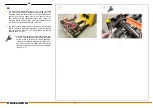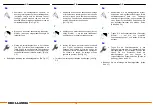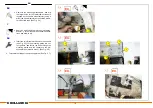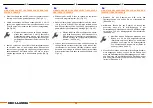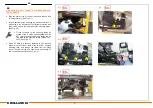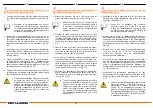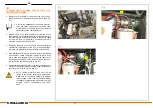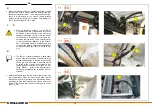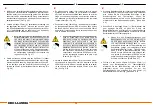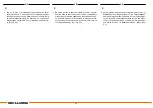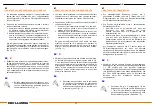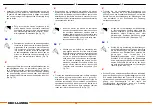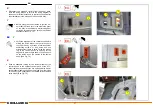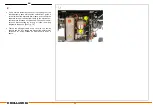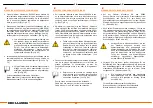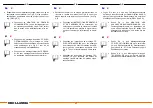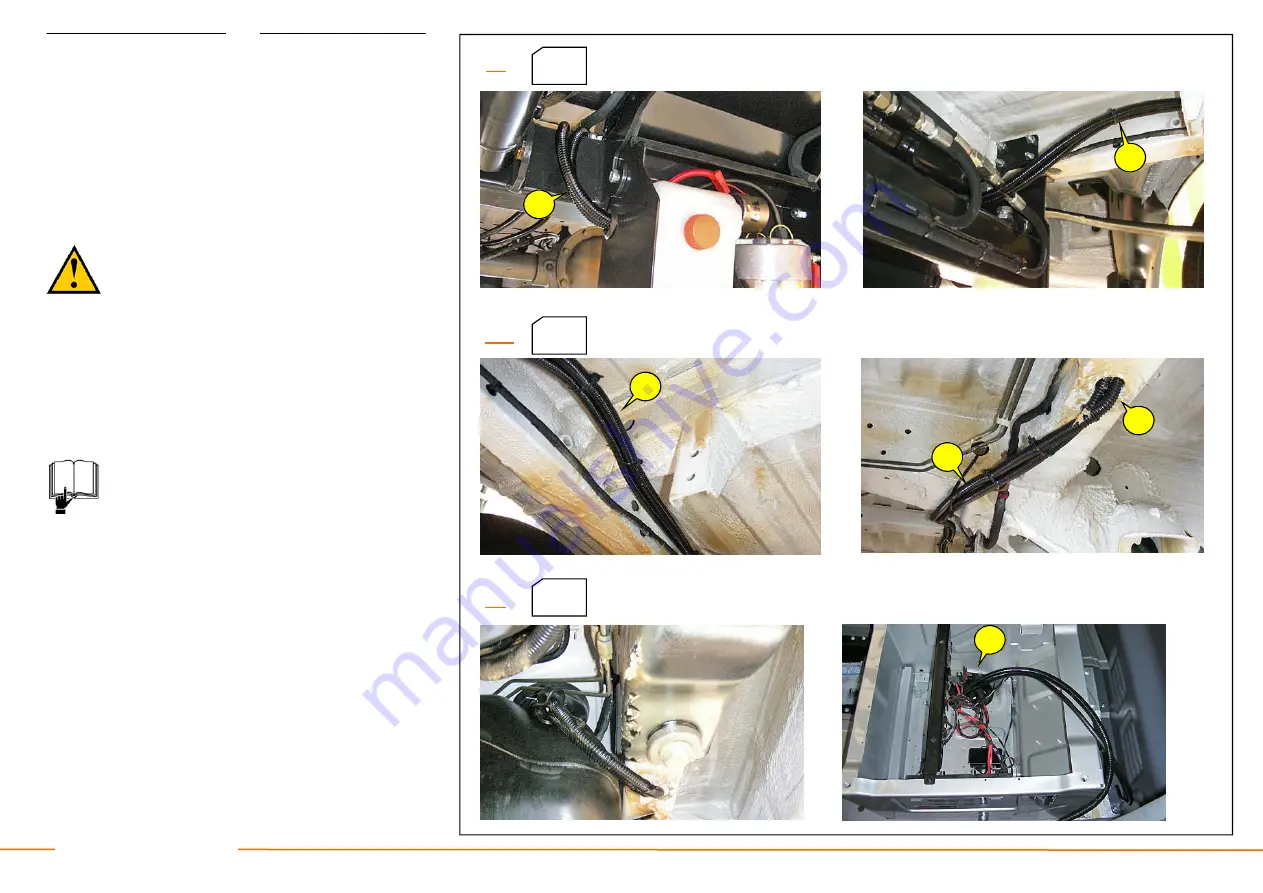
29
EN
DHOLLANDIA
6.4
4.12
!
!
!
!
!
6.5
•
When it is foreseen that the (+) battery cable and (-) earth
cable will run close to exhaust pipe, the catalyser and pre-
catalyser, the particle filter,… and other heating compo-
nents, it is compulsory to use class 2 tubing (marked
white) over the full length. This sustains a temperature of
100°C continuously, and 125°C peak.
•
Seek an adequate routing to run the 35mm²
(+) battery cable and (-) earth cable to the vehi-
cle battery. Ensure that the wiring cannot be
damaged, squeezed, heated or melted by any
of the fixed or moving parts of the vehicle. En-
sure also that the wiring doesn’t interfere with,
or isn’t connected or attached to the suspen-
sion, the breaking systems, oil pipes and wiring
circuits of the vehicle. Ensure adequate fixation
by means of cable ties every 10 cm. [See Fig.
6.4]
•
The 35mm² (+) battery cable and (-) earth cable
can be fixed the chassis by means of cable ties
around existing holes or cavities in the chassis
[See Fig. 6.4], or by means of wire clips riveted
or bolted to the chassis, and sufficiently pro-
tected against corrosion by means of zinc
spray, Dinitrol,… (refer to the manufacturer’s
handbook for details what is allowed and not
allowed).
•
Seek an adequate entry into the driver’s cabin or the bat-
tery compartment under the motor hood. Most vehicle
brands and types are equipped with a dedicated rubber
diaphragm to pass the wiring from the chassis area to the
inside of the vehicle cabin (without drilling extra holes).
[See Fig. 6.5]
F
E
E
E
EX.
EX.
EX.
!

